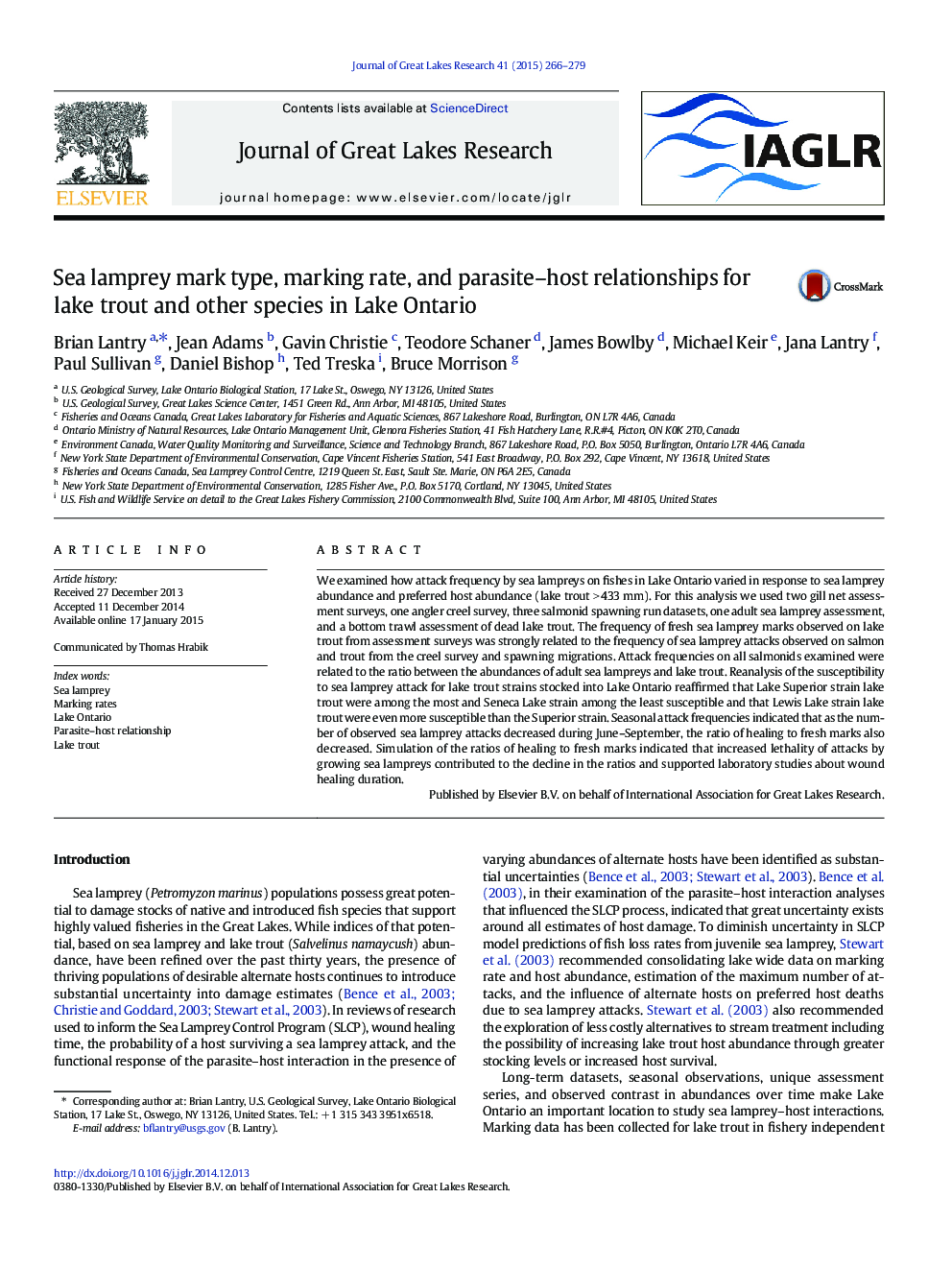| Article ID | Journal | Published Year | Pages | File Type |
|---|---|---|---|---|
| 6305186 | Journal of Great Lakes Research | 2015 | 14 Pages |
Abstract
We examined how attack frequency by sea lampreys on fishes in Lake Ontario varied in response to sea lamprey abundance and preferred host abundance (lake trout >Â 433Â mm). For this analysis we used two gill net assessment surveys, one angler creel survey, three salmonid spawning run datasets, one adult sea lamprey assessment, and a bottom trawl assessment of dead lake trout. The frequency of fresh sea lamprey marks observed on lake trout from assessment surveys was strongly related to the frequency of sea lamprey attacks observed on salmon and trout from the creel survey and spawning migrations. Attack frequencies on all salmonids examined were related to the ratio between the abundances of adult sea lampreys and lake trout. Reanalysis of the susceptibility to sea lamprey attack for lake trout strains stocked into Lake Ontario reaffirmed that Lake Superior strain lake trout were among the most and Seneca Lake strain among the least susceptible and that Lewis Lake strain lake trout were even more susceptible than the Superior strain. Seasonal attack frequencies indicated that as the number of observed sea lamprey attacks decreased during June-September, the ratio of healing to fresh marks also decreased. Simulation of the ratios of healing to fresh marks indicated that increased lethality of attacks by growing sea lampreys contributed to the decline in the ratios and supported laboratory studies about wound healing duration.
Keywords
Related Topics
Physical Sciences and Engineering
Earth and Planetary Sciences
Earth and Planetary Sciences (General)
Authors
Brian Lantry, Jean Adams, Gavin Christie, Teodore Schaner, James Bowlby, Michael Keir, Jana Lantry, Paul Sullivan, Daniel Bishop, Ted Treska, Bruce Morrison,
